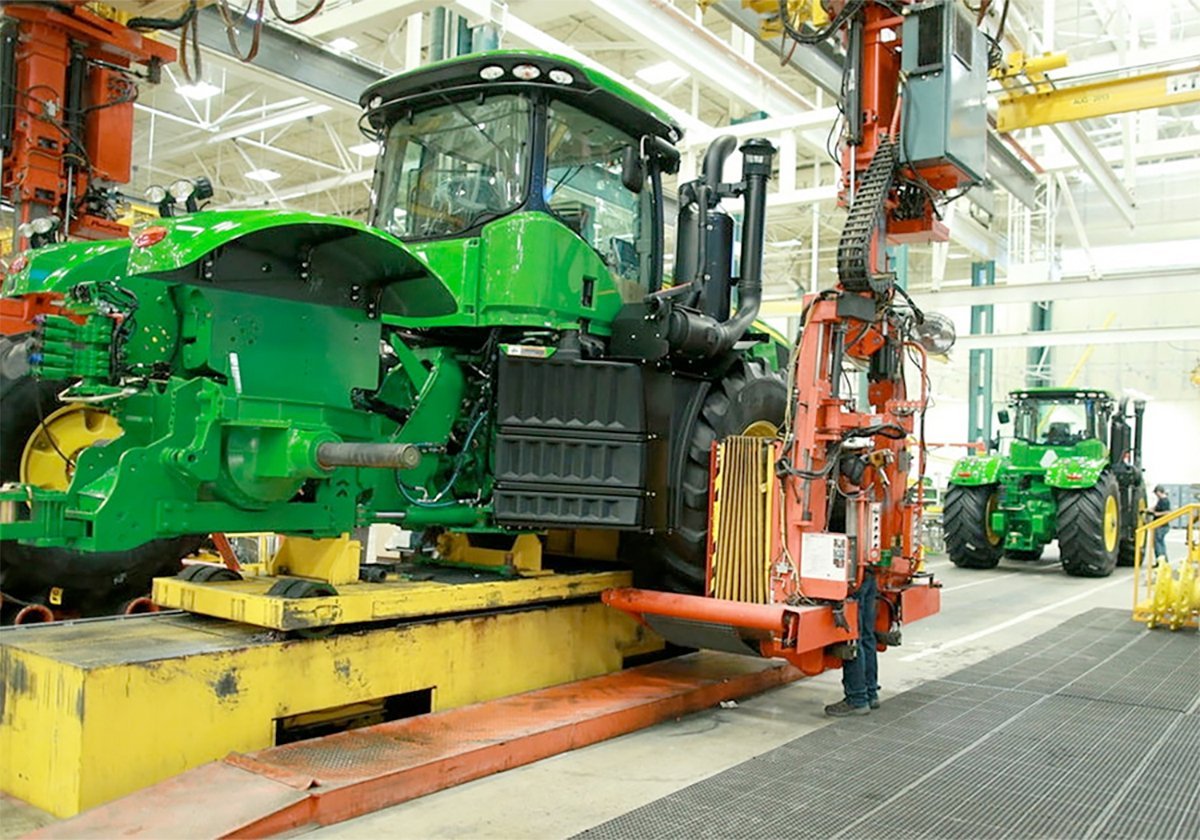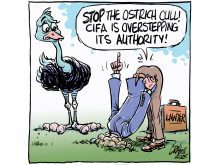It appears the radio frequency identification program is being embraced wholeheartedly.
RFID tags are the accepted technology of the future. Australian farmers already use this technology to great benefit. They have automatic readers on their chutes linked to a scale that records the weight of every animal. Its history then comes up on the computer screen and relevant information can be entered immediately.
This is most likely where we in Canada are headed. In the meantime, there will be growing pains.
RFID tag retention has been excellent if the tags are placed toward the inner one-third of the ear with the thick female end on the inside. They should be placed between the second and third cartilages and the yellow back buttons should be used to complete the set.
Read Also

Trump’s trade policies take their toll on Canadian producers
U.S. trade policy as dictated by president Donald Trump is hurting Canadian farmers in a multitude of ways.
In the future, this consistent yellow tag will allow Canadian Food Inspection Agency inspectors to easily pick out the RFID tagged cattle and identify where to scan with a reader from the back of the ear.
When tagging, do not place the RFID tag in the middle of an existing tag. CFIA rejects this and I know of a few incidents where producers had to pay to have cattle retagged.
Deadlines were selected because the Canadian Cattle Identification Agency wanted producers to tag calves that will soon enter the system with the new RFID tags so that they can be tied to the age verification process.
CFIA will not start strict enforcement until Jan. 1, 2008, partially because without checking records prior to this date, the agency wouldn’t know whether the cattle were coming from the herd of origin.
Producers should use up remaining bar code tags on cull cows and bulls before the deadline.
The 16 months between Sept. 1, 2006, and Dec. 31, 2007, are a buffer with soft encouragement to get the job done. With markets opening up and age verification being the next step, the marketplace is also encouraging this move.
To make recording easier, try to buy the tags sequenced in large lots.
The manufacturers must get a bit more diligent in this regard. I have sold producers a box of 1,000 tags direct from the manufacturer and found bags of 25 were missing and others inserted in their place. This forces producers to number the bags in the order they use them.
One manufacturer of the Reyflex tags has the individual tags in order encased in plastic in a continuous roll. This would work ideally for calves in the spring because they would be tagged consecutively in the order they are born.
Other manufacturers such as Allflex have continued with the stickers that were implemented with the set-aside program. Some producers like these because the stickers can be placed in the records as a calf is tagged. It would be nice if all the tag manufacturers embraced these great ideas.
Each built-in efficiency carries a cost and uniqueness to marketing. There has been interest in a tag that has the RFID on the back and the management tag on the front similar to the dairy industry. But retention will drop and the tags are costly, especially when producers may need to retag up to 20 percent a year.
Calves can still be verified with bar code tags. This means that if producers’ 2005 calves were fitted with the bar code tags and they have accurate calving records, the calves can still be age verified.
Some feeders and auction markets are helping producers get this done. The market offers a premium for age verified cattle. It is ludicrous to hear the Alberta government suggest we need mandatory age verification. Producers have embraced the new RFID tags and another forced rule will only cause them to rebel.
Work is also proceeding on a program to identify cattle younger than 21 months by bone ossification because teeth examination is not a good way to determine age in young cattle. However, accurate age verification using RFID tags will trump this process.
Enforcement is a concern with any program and random audits will be performed, possibly using accredited veterinarians. We cannot afford to have inaccurate data entered, especially regarding age verification.
The CCIA suggests that producers can enter the entire herd with the birth date of the oldest calf, but we must not get the spread too wide. Ideally, registering all calves born in a two to three week period should be tight enough.
If the spread is too wide, when the youngest calves in the group are ready for market, it might appear by the group record that they are older than 21 months at slaughter.
For large herds, this might mean registering 50 to 100 calves at one time. The CCIA tells me there is an Excel spread sheet on the website where producers can enter calves individually, save that to print for their records and then enter the entire spreadsheet at once. This would be accurate and young calves would not be hurt by the group registration approach.
The website for the age verification is www.clia.livestockid.ca.
RFID tags will soon be commonplace. Over time reasonably priced accurate readers with the required software will be developed for use on the farm.
Roy Lewis is a veterinarian practising in Westlock, Alta.














